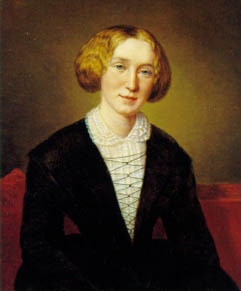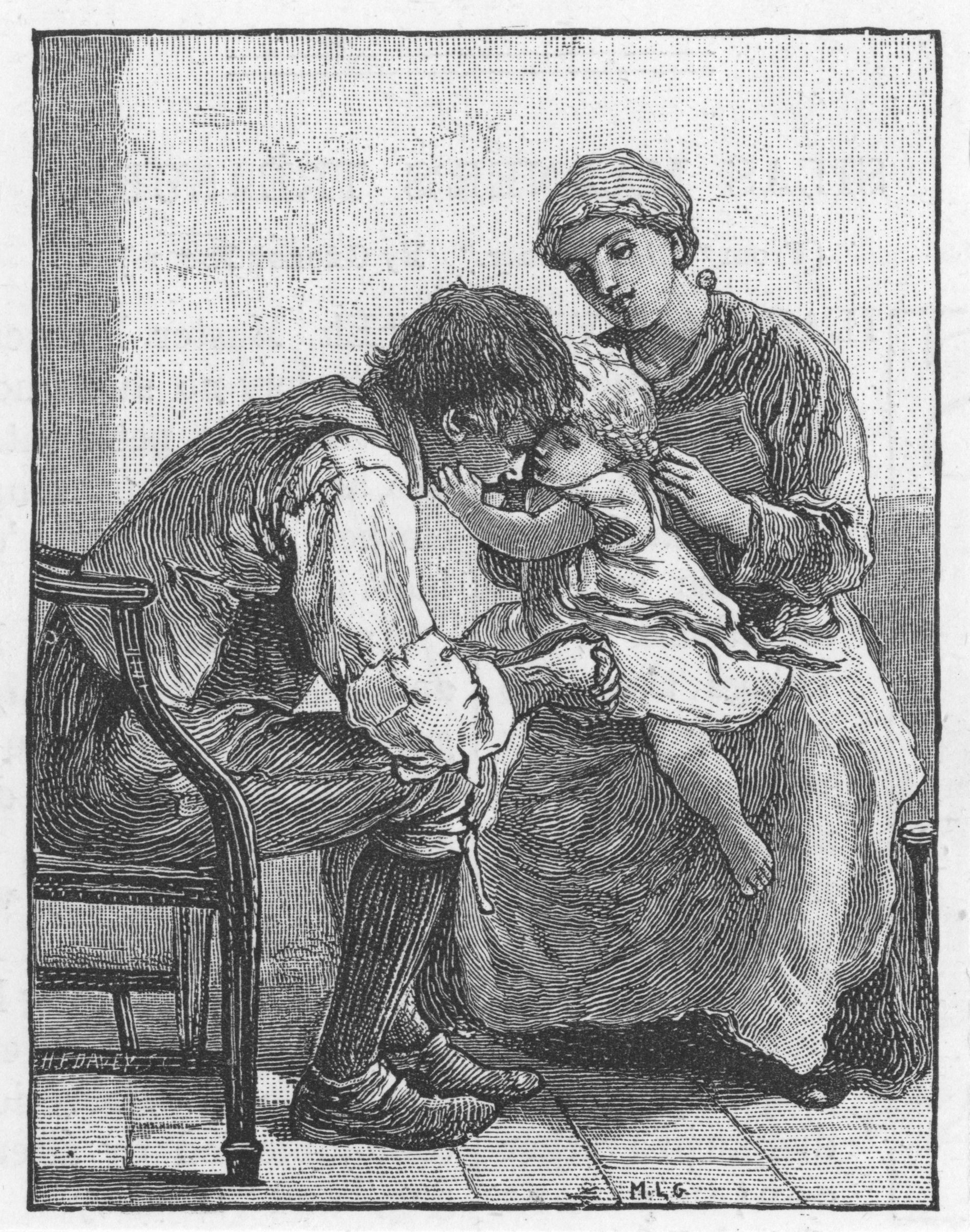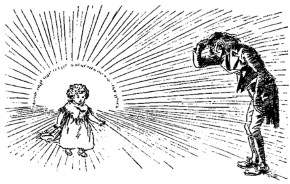Eliot, George (Mary Ann Evans)
George Eliot was born Mary Ann Evans on November 22nd 1819. From her childhood in rural Warwickshire to her death as a renowned writer in London, her life was a fascinating rollercoaster. She produced some of the most acclaimed novels of Victorian literature. Yet, she was just a woman, desperate to be loved.
Perhaps because her father lacked formal education, she ended up being a fairly well educated compared to other girls of the time. She first went to school with her brother, whom she adored, and then moved to other schools up to the age of 16 when her mother died and she had to leave school to look after her father’s household. Influenced by school principals and teachers and possibly in her desire to be the best and please others, Mary Ann became a devout evangelical Christian. So fervent was her faith that she even took to wearing a cap on her head to conceal her looks, even though she had never been considered a beauty. However, something happened at the age of 21 that changed her religious beliefs forever.
In 1841, Mary Ann and her father moved to Coventry. It was there that Mary Ann started to meet educated liberal intellectuals, amongst whom she must have felt more at home. Always fascinated by religion and theology, she finished a translation of Strauss’ Leben Jesu from the German that had been started by a friend’s fiancée, Miss Barbant. This work questioned the truth of the Gospels so Mary Ann began to have a reputation as a free thinker; her religious beliefs made a radical turn and she stopped going to church. This upset her father very much. Mary Ann who had always wanted to please her father was devastated with his reaction but felt she had to follow her heart and mind. Again, an unusual thing to do for a girl of her times.
When her father died in 1849, Mary Ann and her Bohemian friends, the Brays, visited Italy. She fell in love with Geneva, where she lived for a year. With her father dead, Mary Ann seemed to need desperately the company of men and she became infatuated with her landlord. Sadly, he did not reciprocate her feelings as he was a married man. Between this time and the time when she met the love of her life, Mary Ann is said to have had a number of relationships with men who were not a good match for her for various reasons. There was even a rumour that she proposed to one of her friends, the philosopher Henry Spencer. Unfortunately, although he liked Mary Ann’s brains, he was put off by her lack of beauty and rejected her on a couple of occasions.
Another admirer of her intelligence was John Chapman, owner of the liberal journal Westminster Review. He offered Mary Ann, or Marian as she chose to call herself, the post of assistant editor in 1851. Marian accepted the post and helped the paper gained success. Of course, they had to hide the fact she was a woman or many male writers would have refused to write for them! It was during this time in London that Marian met more intellectuals. Amongst them were Lord Tennyson, Darwin and Dickens.
In 1854 at last Marian found love. However, love did not come easy for her. George Henry Lewes; a writer, playwright, linguist, editor and philosopher; became the object of her affection. He was married to a publicly unfaithful woman but he could not get a divorce. Marian made perhaps the most difficult decision of her life and eloped with Lewes to Germany. This decision led them to be isolated and the object of wicked gossip and criticism. Marian was to suffer immensely but she stuck to her decision to risk all for love.
Happily, their isolation did not last forever. Lewes encouraged Marian to write fiction, which she did under the pen name George Eliot. Both Lewes and Marian were aware of their bad reputation and they did not want it to tarnish Marian’s work. Besides, the work of a man would be better regarded by the public of the time. Yet, when her first work was published (Scenes of a Clerical Life 1858), people became desperate to know who this wonderfully insightful writer was. A young man Joseph Liggins claimed to be Eliot for some time but Marian’s true identity became public soon after she published Adam Bede in 1859. Now that she was a successful famous writer, Marian began to be accepted and her illicit relationship with Lewes was no longer condemned.
Lewes and Evans lived happily together until his death in 1878. In a letter to her solicitor, Marian said about her relationship with Lewes; “our marriage is not a legal one, though it is regarded by us both as a sacred bond.” It was during this time that Eliot wrote and published all her work. She was admired, respected and recognised as one of the best authors of the time. Her characters were different from those of other Victorian writers in as much as they were not heroic. Unlike her contemporaries, she wrote about ordinary life in local accents.
When Lewes died, Marian was distraught; which is why people found it difficult to understand that in 1880 she married John Walter Cross, an American admirer who was 20 years younger than her. Rumour has it that she discovered that Lewes had been unfaithful to her but maybe it was just the want for male company that had characterised her all her life.
On December 22nd 1880, eight months after her marriage to Cross, Marian Evans died in London. She is buried in in Highgate Cemetery next to the love of her life, George Henry Lewes.





